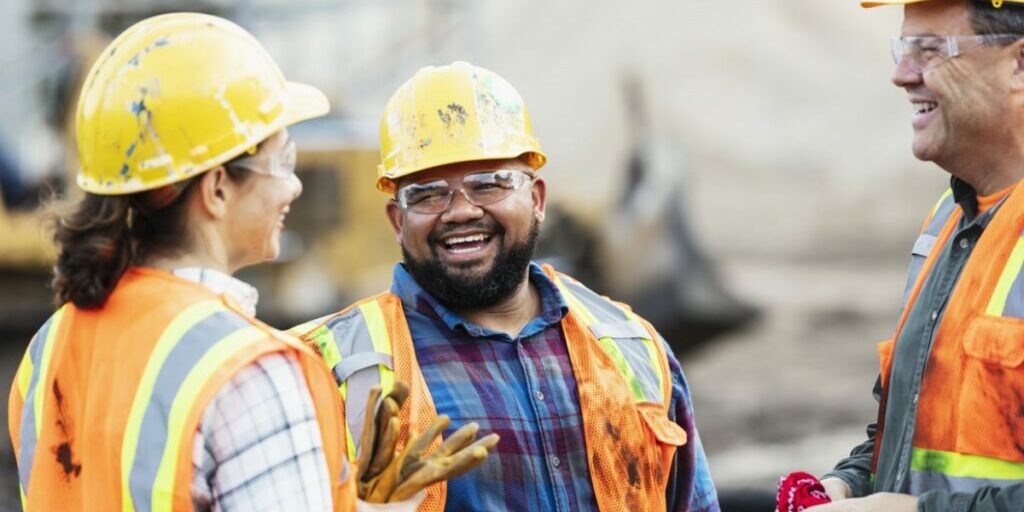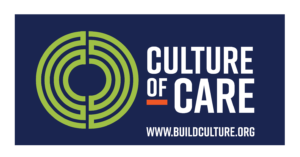Culture of CARE in Construction

Anyone working in the construction industry knows of its longstanding tendency to be stratified along racial lines. While the reasons for this are numerous, many industry leaders are working to reverse the trend.
According to the U.S. Bureau of Labor Statistics, the two largest demographics in the construction industry are white and Hispanic. Note that these stats don’t add up to 100% because some people have dual categories, such as white/Hispanic.
- 88.6% are White
- 30% are Hispanic or Latino
- 6% are Black or African American
- 2% are Asian
Reports of racism and lack of diversity pervade the industry. A six-part Special Report in Construction Dive addresses the topic from numerous angles on how racism impacts the construction industry. From blatant racist incidents such as nooses or graffiti to an underlying culture that occurs at some workplaces, the series offers a balanced review of where the construction industry stands today in regards to diversity.
One initiative that’s gaining momentum is the Association of General Contractors’ Culture of CARE program. Initially launched by AGC’s Washington division, it’s now a national movement. Its aim is clear:
“To advance the construction industry as the industry of choice for diverse and talented workers by building inclusive work environments in construction firms nationwide.”
Hundreds of construction firms have signed their inclusivity pledge and are committed to building and fostering construction workforces that are open and safe for all.
In AGC’s words, “The companies who commit to a Culture of CARE aren’t passively thinking about their company culture. They are actively working to ensure that every employee – from the CEO to the laborer – has the opportunity to feel valued, respected, and heard. Companies who commit to a Culture of CARE believe that everyone has the right to a work environment that is free from harassment, hazing, and bullying.”
From the official Culture of CARE website, it stands for the following.
Commit to hire and pay based on skill and experience regardless of ability, age, ethnicity, gender identity, nationality, race, religion, sex, or sexual orientation.
Attract prospective employees by creating inclusive workplaces that are free from harassment, hazing and bullying.
Retain high-performing employees by identifying and removing barriers to advancement.
Empower every employee to promote a culture of diversity and inclusion.

Individuals and companies can take the first step and commit to following the CARE principles in their businesses and work cultures. From there, they offer a wide array of supportive services ranging from a Diversity & Inclusion assessment survey, HR policies, stickers, posters, and diversity best practices. They have freely available toolboxes, and toolkits full of practical steps companies can take to build an inclusive culture. Leaders, HR, and training specialists can readily access them as they work toward establishing healthy and safe work environments.
Some of the recommended HR practices include allowing for those with equivalent experience to be considered, thus lowering the bar for people of all backgrounds to enter the industry. It also recommends blind application review where the person’s cultural background isn’t displayed to those considering them. They note that building cultural sensitivity training into all steps of hiring and onboarding is essential for cultivating an inclusive environment.
On the surface, these initiatives may sound like they’re going to cost companies more money to implement. To the contrary, many have argued that there are many financial benefits to maintaining a healthy and accepting culture for construction companies.
The Constructive Dive outlines these in their article “Racism on the Jobsite: How hate erodes construction’s bottom line.”
“Beyond the obvious answer that it is the right thing to do, construction executives should be concerned about rooting out racism because it impacts their business.” – A corporate manager for California-based Rosendin Electric.
Five Tangible Ways Racism Adversely Affects Companies’ Profits
- It keeps workers away – Minority construction employees said racial harassment at work produces a constant internal struggle to not quit their jobs so they can continue to support their families.
- It makes a jobsite more dangerous than it needs to be – Safety and trust are deeply connected in construction. You need to know that where safety is concerned, your co-worker is going to do their job. If people are expressing hate on the Jobsite, how can you feel confident and trust that they will keep you safe?
- It increases deadly accidents among some people of color – Hispanic/Latinx workers are around 9% more likely to die on the jobsite than White, non-Hispanic workers.
- It increases liability and hurts reputations – Construction firms that don’t root out racism on job sites may end up in a courtroom with all the reputational risk that comes from a discrimination suit.
- It offends customers – Unchecked racism on job sites can have farther-ranging effects because many construction customers don’t want to be associated with that behavior.
The AGC also produced a 12-page report, “The Business Case for Diversity & Inclusion in the Construction Industry” (pdf). It goes into greater detail on why creating and maintaining a safe and diverse culture is profitable to construction companies. It states:
“An intentional and practical culture shift towards diversity and inclusion can positively impact company profitability by improving employee productivity, recruiting and retaining top talent, increasing innovation, and creating a safer workplace. Furthermore, collaborative partnerships with diverse entities provide opportunities to expand market share.”
Main Highlights of Culture of Care
- Diversity & Inclusion: Driving Success – A McKinsey study found that companies in the top quartile for racial and ethnic diversity are 33 percent more likely to have financial returns above national industry medians.
- Inclusion Drives a Positive Safety Culture – Documentation supports that workers who have not been integrated into a workplace culture, or who perceive themselves as “outsiders,” are more likely to have accidents because of the increased psychological and emotional stress of being excluded.
- Supplier Diversity Programs Increase Market Share – With the right minority partnerships, construction companies can better serve their untapped markets.
- Exclusion Affects Employee Productivity, Resulting in a Loss of Revenue – An employee’s productivity decreases significantly when they are excluded from contributing to the company’s mission in a meaningful way and/or are subject to a hostile work environment.
- Inclusion Mitigates Employee Turnover – Sixty-five percent of employees who experience exclusive behaviors said they would leave or seriously consider leaving if they found a different job.
- Diversity & Inclusion Drives Innovation – When employees think their company is committed to diversity and they feel included, there’s an 83 percent increase in their ability to innovate. Innovation leads to better results, and results drive company performance and profit.
While no two construction companies are the same, we all share the responsibility of continually pressing forward with positive change and creating diverse and inclusive work environments.
Tell us about how your foster a diverse construction workplace.




